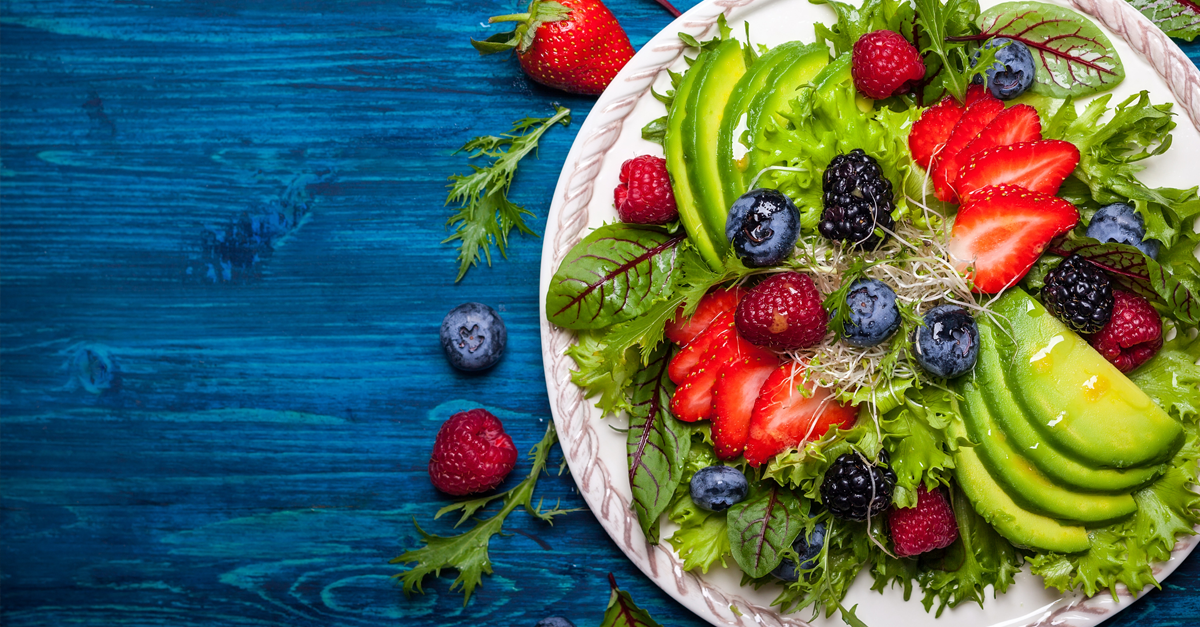Every generation has looked for a fountain of youth or magic pill to ward off aging and stay young, vital and sexy. But you don’t have to go on a complex quest to find the secret—it’s already within your reach. The sticking point? It takes a little more effort than swallowing a pill or an elixir.
The “secret” is fighting inflammation, a vitality thief. Now, inflammation isn’t always a bad thing—cut your finger, and the swelling and redness you see are signs of your immune system at work fighting infection and repairing tissue. The threat to happy and healthy living is chronic inflammation—when your body must constantly react to “invaders” (such as too much sugar and even too much stress) and stays on high alert. Chronic inflammation has been linked to conditions as far reaching as Alzheimer’s disease, asthma, arthritis, autoimmune diseases, allergies, obesity, osteoporosis, inflammatory bowel disease, Crohn’s disease and cancer. Plus, inflammation can drive the aging process by harming telomeres, the “endcaps” on our strands of DNA.
What do you need? How about a time machine to wind back the clock on inflammation and aging? In a very real way, that’s exactly what the following 10 simple lifestyle tweaks can give you…

1. Feast on inflammation-fighting foods.
Certain foods can help dial down inflammation. Pile your plate with green leafy vegetables, cruciferous vegetables and deeply pigmented produce ranging from blueberries to carrots to bell peppers. These fruits and vegetables are packed with natural antioxidants and polyphenols—thousands of individual anti-inflammatory compounds. Plus, they’ll fill you up.
Also eat a variety of fiber-rich whole grains such as amaranth, bulgur and quinoa. Fiber has been shown to reduce levels of C-reactive protein (CRP), a marker of inflammation in the blood that’s been linked to diabetes, heart disease and rheumatoid arthritis.
Add in a few more anti-inflammatory heroes:
- Wild salmon and mackerel, rich in omega-3 fatty acids (more on this below)
- Nuts
- Black, green and white teas
- Avocados, flaxseed and olives
Read more: “10 Best Anti-Inflammatory Foods…and 10 Foods to Avoid”
 2. Avoid inflammation trigger foods.
2. Avoid inflammation trigger foods.
The reason many foods have been slapped with the “bad for you” label is precisely because they trigger inflammation. Key culprits include:
- Foods and beverages with processed sugars, from soda to sweet treats to sweetened cereals and even jarred tomato sauce
- Refined carbohydrates—white flour, white rice, etc. and everything made with them, from bread to pasta
- Trans fats—read labels closely because even foods marked “no trans fat” are allowed to contain trace amounts
- Processed meats such as bologna, salami, hot dogs and sausages
- French fries, potato chips and other fried snack foods
- Margarine, shortening and trans-fat stabilized lard (the kind that doesn’t require refrigeration and is used in commercial products)
- Conventional (nonorganic or nongrass-fed) organ meats (such as liver) that often contain antibiotics, fertilizers and other unwanted residues
It’s a tall order to avoid everything on the list, but once you do get a food out of your life, you’ll miss it less and less…until you don’t really miss it at all.
Read more: “Addicted to Bad Foods? It’s Not Your Fault!”

3. Rebalance your healthy-fats ratio.
Omega-3s and omega-6s are both naturally unsaturated fats that your body can’t make on its own. There are three main types of omega-3 fats: Alpha- linolenic acid (ALA) and the more widely known EPA and DHA. ALA is found in foods such as walnuts, chia seeds and flaxseed, while EPA and DHA are found in fatty fish such as salmon, mackerel and herring.
Omega-6s, including linoleic acid and arachidonic acid, are primarily in vegetable oils such as corn oil, cottonseed oil, safflower oil, sesame oil, peanut oil and soy oil. They’re not inherently unhealthy—the problem is that we eat them in an unhealthy proportion to omega-3s. The American diet tends to be high in omega-6 fats and low in omega-3 fats, and that causes inflammation.
The solution: Scale back on omega-6-heavy oils, increase your intake of plant foods such as flaxseed and walnuts, and eat fatty fish at least twice a week. Ask your health-care professional whether you’d benefit from a blood test to see if you’re deficient in omega-3 fats and need a supplement.
Read more: “Omega-3 Supplements May Save Your Life After a Heart Attack”

4. Find your sleep sweet spot.
For some people, finding the time to get enough sleep is the problem. As we get older, it can be hard to fall asleep and stay asleep. In fact, insomnia affects nearly half of people age 60 and older. Poor sleep can increase stress hormones that cause inflammation. One study published in Biological Psychiatry found that sleep disturbances, such as not sleeping well or struggling with insomnia, increased inflammatory markers such as CRP and interleukin-6 (IL-6). And it works in the other direction, too: Sleeping more than eight hours per night can cause a similar rise in CRP and IL-6 levels.
A happy medium: Strive for seven to eight hours of nightly shut-eye. And keep in mind that many sleep troubles can improve by practicing good sleep habits, such as going to bed and waking up at the same times every day, weekends included.
Read more: “21 Ways to Get the Best Sleep of Your Life”
 5. Clock 20 minutes of activity every day.
5. Clock 20 minutes of activity every day.
We’ve known that regular exercise can help suppress inflammation. Now we’re learning how and how much you need. One study published in Brain, Behavior and Immunity found that as few as 20 minutes of daily moderate exercise does the trick.
Study participants who walked briskly on a treadmill for 20 minutes experienced a 5% decline in reactive immune cells linked to inflammation. One theory: Hormones released into the body during even moderate amounts of exercise can lead to changes in the body’s immune system response. These include a decrease in cells producing TNF (tumor necrosis factor), a substance that causes inflammation.
What’s more, exercise burns fat—and when you have less fat, you produce fewer inflammation-promoting proteins called cytokines. The takeaway: Every bit of exercise counts.
Read more: “You Can Exercise Less and Be Just as Healthy”

6. Put the “breaks” on stress.
You may have already drawn a line between stress and those headaches you get at work, but you might be surprised at how potent stress is—it can put your body’s inflammatory response into hyperdrive. We can all do a bit better when it comes to stress management. But which techniques work best?
Yoga breathing can reduce stress-related inflammation in the body, according to a study published in BMC Complementary and Alternative Medicine. Another study found that mindfulness meditation significantly reduced stress-induced inflammation (measured by inflamed skin). And you don’t need to meditate for hours. Start with just five or 10 minutes and see how you feel.
Other proven relaxation techniques:
Experiment to see what helps you de-stress the most.
Read more: “Meditation for People Who Don’t Like to Meditate”

7. Put out that cigarette once and for all.
Add inflammation to the long list of reasons to quit smoking for good. Smoking revs up the immune system—and not in a good way—and makes inflammation worse. And if you’ve traded in your nicotine sticks for e-cigs, you’re still not in the clear: Vaping triggers unique immune responses in the lungs—again, not beneficial but instead harmful, according to a University of North Carolina School of Medicine study.
As far as that other vice, alcohol, is concerned, it’s not necessarily a vice at all. Moderation is key. That means no more than an average of one to two drinks per day for men and one drink per day for women, according to the American Heart Association. Anything beyond this could potentially cause changes in the intestinal lining, allowing bacteria to pass through into the bloodstream. The result: Inflammation.
Read more: “To Quit Smoking, Skip the E-Cigs”

8. Boost your beneficial gut bacteria.
Good gut health is needed for far more than just digesting food. With 70% to 80% of your immune system residing in your digestive tract, caring for your gut (and the friendly bacteria that reside there) will help quell inflammation. Add gut-health boosters, such as prebiotics and probiotics to your daily diet. For help digesting and eliminating food (and reversing inflammation), talk to your doctor about taking digestive enzymes.
Read more: “The Battle in Your Belly–May the Good Bacteria Win”

9. Spice up your life (literally).
Spices and herbs can help put out the fire of inflammation and slow the aging process. If you don’t already know turmeric, it’s time to get acquainted. The main compound in turmeric, curcumin (often called “curecumin” because it’s so powerful), gives turmeric its bright yellow color as well as its anti-inflammatory benefits. Turmeric is thought to inhibit eicosanoids, signaling molecules that play a big role in the body’s inflammatory response. Curcumin supplements have also been found to reduce levels of C-reactive protein (CRP).
Tip: When you cook, combining turmeric with black pepper can increase the amount of curcumin the body absorbs and uses by as much as 2,000%.
Other herbs and spices with anti-inflammatory effects include:
- Cinnamon
- Cayenne pepper
- Garlic
- Ginger
- Parsley
- Rosemary
- Sage
- Saffron
Read more: “Top 5 Natural Inflammation Fighters”
10. Watch your weight…and your calories.
When you’re carrying extra weight, your body is under metabolic stress—and fat cells can initiate an inflammatory reaction. You can put the process in reverse by losing just 5% to 10% of your weight.
Reducing the number of calories you consume by 25% (from 2,000 per day to 1,500, for example), even if you’re at a healthy weight, can also help cut inflammation, according to researchers at the Jean Mayer USDA Human Nutrition Research Center on Aging at Tufts University. They studied 220 people of normal weight and found that those who cut their daily intake of calories (while still consuming adequate amounts of protein, vitamins and minerals) had reduced levels of markers of chronic inflammation. Some experts believe calorie restriction is at the heart of slowing down the aging process itself and that this can be achieved with a less-severe 10% calorie reduction. Of course, it’s important to get enough protein, healthful fats, fiber and vitamins and minerals—so it’s best to work with your doctor or a nutritionist to ensure that cutting calories doesn’t lead to malnutrition.
Read More: “Eat Less, Live Longer? Calorie Restriction and Longevity”



